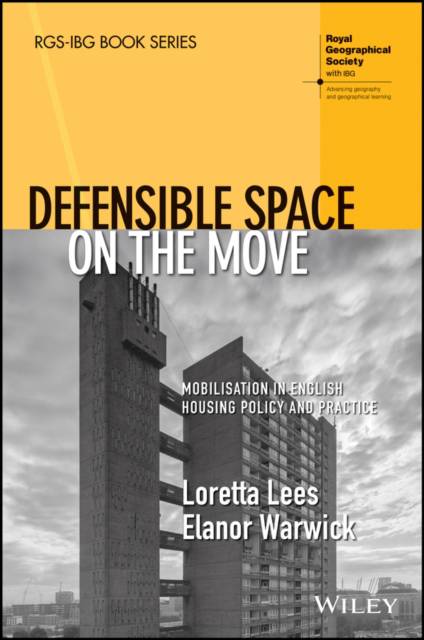
- Retrait gratuit dans votre magasin Club
- 7.000.000 titres dans notre catalogue
- Payer en toute sécurité
- Toujours un magasin près de chez vous
- Retrait gratuit dans votre magasin Club
- 7.000.0000 titres dans notre catalogue
- Payer en toute sécurité
- Toujours un magasin près de chez vous
Defensible Space on the Move
Mobilisation in English Housing Policy and Practice
Loretta Lees, Elanor Warwick
54,45 €
+ 108 points
Format
Description
Both theoretically informed and empirically rich, Defensible Space makes an important conceptual contribution to policy mobilities thinking, to policy and practice, and also to practitioners handling of complex spatial concepts.
- Critically examines the geographical concept Defensible Space, which has been influential in designing out crime to date, and has been applied to housing estates in the UK, North America, Europe and beyond
- Evaluates the movement/mobility/mobilisation of defensible space from the US to the UK and into English housing policy and practice
- Explores the multiple ways the concept of defensible space was interpreted and implemented, as it circulated from national to local level and within particular English housing estates
- Critiquing and pushing forwards work on policy mobilities, the authors illustrate for the first time how transfer mechanisms worked at both a policy and practitioner level
- Drawing on extensive archival research, oral histories and in-depth interviews, this important book reveals defensible space to be ambiguous, uncertain in nature, neither proven or disproven scientifically
Spécifications
Parties prenantes
- Auteur(s) :
- Editeur:
Contenu
- Nombre de pages :
- 304
- Langue:
- Anglais
- Collection :
Caractéristiques
- EAN:
- 9781119500438
- Date de parution :
- 14-02-22
- Format:
- Livre broché
- Format numérique:
- Trade paperback (VS)
- Dimensions :
- 152 mm x 229 mm
- Poids :
- 408 g

Les avis
Nous publions uniquement les avis qui respectent les conditions requises. Consultez nos conditions pour les avis.






